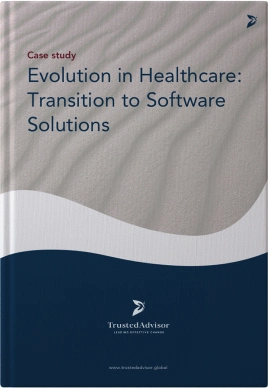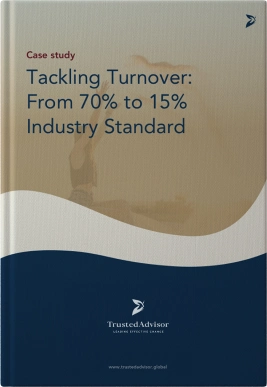Crisis & Change Management
Can confidence, vision, market disruption, smart hiring, and learning overcome today’s challenges?

Your Challenges
Startup
- Inadequate preparedness
- Limited resources
- Poor communication
- Technology dependency
- Decision-making under pressure
- Resistance to change
Midsize / Venture Capital
- Crisis training and drills
- Coordination across departments
- Crisis leadership skills
- Uncertain external factors
- Global crisis coordination
- Organizational culture clash
Enterprise / VC
- Adapting to evolving threats
- Unclear objectives
- Ineffective change management team
- Inadequate employee involvement
- Failure to sustain change
NB: If left unresolved, specific challenges may persist consistently across all stages or manifest as a consequence of various circumstances; Project management is essential for strategic changes that can't be handled through daily operations.
How Trusted Advisor Solves Them
Benefits & Results
Sustained Benefits and Minimized Regression to Previous Practices
Adopting a strategy that sustains benefits and minimizes regression maximizes the return on investment in changes, as improvements continue to deliver value long-term. This consistency boosts team productivity and efficiency, as employees grow proficient in stable workflows. It also strengthens employee buy-in, fostering a culture of
Proactive Strategies and Reduced Impact From External Influences
This foresight helps maintain stability, allowing companies to keep operations steady even when external conditions fluctuate. By preparing for potential risks, businesses minimize disruptions and reduce the costs associated with sudden changes. This approach also supports better resource allocation, as teams can focus on growth initiatives
Alternative Contingency Plans and Reduced Disruptions
This preparation helps companies quickly adapt, reducing the potential negative impact of unforeseen changes and preserving productivity. By proactively addressing risks, organizations save costs that would otherwise be needed for emergency responses or recovery efforts. Staff
Reduced Misinformation, Increased Stakeholder Trust
This clarity minimizes misunderstandings and aligns everyone toward common goals, making decision-making more effective and collaborative. As stakeholders gain confidence in the information they receive, their trust in the organization strengthens, leading to
Smoother Change Implementation and Improved Organizational Agility
With streamlined change processes, employees feel more supported and confident, as clear communication and resources make transitions easier. This agility allows the organization to seize new opportunities faster than competitors, keeping it responsive to market shifts and customer needs. By reducing the challenges associated with
Effective Decision-Making Even in High-Pressure Situations
Leaders equipped to make quick, informed choices help prevent unnecessary delays, ensuring continuity and minimizing potential disruptions. This capability fosters a culture of resilience, as teams know they can rely on steady, decisive leadership when it matters most. It also boosts trust among
AI
VS
Human Consultancy
AI
At vero eos et accusamus et iusto odio dignissimos ducimus qui blanditiis praesentium voluptatum deleniti atque corrupti quos dolores et quas molestias excepturi sint occaecati cupiditate non provident, similique sunt in culpa qui officia deserunt mollitia animi, id est laborum et dolorum fuga. Et harum quidem rerum facilis est et expedita distinctio.
Human consultancy
At vero eos et accusamus et iusto odio dignissimos ducimus qui blanditiis praesentium voluptatum deleniti atque corrupti quos dolores et quas molestias excepturi sint occaecati cupiditate non provident, similique sunt in culpa qui officia deserunt mollitia animi, id est laborum et dolorum fuga. Et harum quidem rerum facilis est et expedita distinctio.
FAQ
Please feel free to reach out. Based on your preferences, we will provide a tailored offer to meet your needs or, if an engagement isn’t necessary, offer transparent, pro bono advice on next steps.
The first and most important step is to admit and acknowledge the issue rather than hiding or denying it. Next, prepare a strategy to address the consequences and implement strong preventive measures to control future incidents.
By communicating transparently, involving employees early, protecting them from negative consequences, and sharing lessons learned and future improvement plans where they will be part of the solution, not part of the problem.
Almost all tools used for day-to-day business operations can help in identifying potential issues early on, assessing whether they may become critical, and determining what falls under the definition of a crisis based on your defined framework.
Crisis management is the process of preparing for, responding to, and recovering from unexpected and disruptive events that threaten an organization’s stability, reputation, or operations. Effective crisis management involves identifying potential threats, creating response plans, and implementing actions to minimize impact and restore normalcy as quickly as possible.


Explore a pilot project and witness the results
Tackling Turnover, Evolution in Healthcare
No hard sales, trust and results only
- A reply in less than 24 hours

